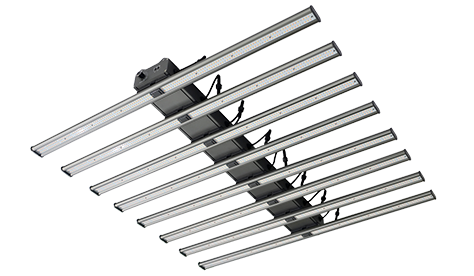Die einfachste Definition der IoT (Internet der Dinge) Ist das Internet Dinge.
In unserer täglichen täglichen Menschen tragen viele Menschen Fitness -Tracker oder Smartwatches, die Teil des IoT -Systems sind. Diese Geräte überwachen Ihre täglichen Aktivitäten, z. B. die Anzahl der Schritte, Ihre Herzfrequenz und Ihre Schlafmuster. Anschließend synchronisieren sie diese Daten in eine mobile App oder einen Cloud -Dienst, sodass Sie Ihren Fitness -Fortschritt im Laufe der Zeit verfolgen können.
IoT-fähige Glühbirnen können über eine Smartphone-App oder Sprachbefehle remote gesteuert werden. Sie können sie planen, um sie zu bestimmten Zeiten ein- oder auszuschalten, die Lichter zu dimmen, um eine gemütliche Atmosphäre zu erzeugen, oder sogar ihre Farbe zu Ihrer Stimmung zu ändern.
Ja, diese Objekte und Geräte, die mit dem Internet verbunden sind, sodass sie Daten sammeln und austauschen können. Es hat das Potenzial, unser Leben bequemer, effizienter und automatischer zu gestalten, indem Geräte ohne menschliche Intervention intelligente Entscheidungen treffen und intelligente Entscheidungen treffen können.
Intelligente Landwirtschaft in der Landwirtschaft
Das Agrar -IoT integriert die IoT -Technologie während des gesamten Produktionsprozesses mit der Landwirtschaft für intelligentes, digitales und automatisches Management.
Die Daten werden durch Sensoren gesammelt, an Gateways aggregiert und dann analysiert und gespeichert. Schließlich werden Anweisungen über Kontrollsysteme erteilt, um die Überwachung und Anpassung des Anlagenwachstums in Echtzeit zu ermöglichen.
Damit, Pflanzenfabriken haben einen automatischen Anbau erreicht.
Durch Datenanalyse- und Algorithmusmodelle können Landwirte fundierte Entscheidungen treffen und genaue Entscheidungsunterstützung und Optimierung des Managementpraktiken für die landwirtschaftliche Produktion bieten. Dies verbessert die Effizienz und Qualität der Agrarproduktion.
Gleichzeitig reduziert es auch den Ressourcenverbrauch und die Umweltverschmutzung und fördert eine nachhaltige berufliche Entwicklung.
IoT -Systeme für Pflanzenfabrik
IoT -Systeme sind ein wesentlicher Bestandteil der vertikalen Landwirtschaft in Innenräumen, sodass die Erzeuger kontrollierte und effiziente Wachstumsumgebungen schaffen können.
Es bietet eine präzise Überwachung, Steuerung und datengesteuerte Erkenntnisse zur Optimierung des Erntewachstums in kontrollierten Umgebungen. Hier ist ein kurzer Überblick darüber, wie IoT in Pflanzenfabriken eingesetzt wird.
Umweltüberwachung
Temperatur- und Feuchtigkeitssensoren: IoT -Sensoren überwachen kontinuierlich die Temperatur- und Luftfeuchtigkeitswerte im Innenbetrieb. Diese Daten stellt sicher, dass die Wachstumsbedingungen für das Pflanzenwachstum in optimalen Bereichen bleiben.
LED -Beleuchtungssteuerung: IoT -Systeme können künstliche Beleuchtung basierend auf den Anforderungen an Pflanzen anpassen, Energie sparen und die Photosynthese fördern.
CO2 -Sensoren: Messung des Kohlendioxidspiegels sorgt dafür, dass Pflanzen eine angemessene Versorgung für die Photosynthese erhalten.
Nährstoffmanagement
Nährstoffablieferungssysteme: IoT-kontrollierte Systeme verabreichen den Pflanzen genau Nährstoffe über hydroponische oder aeroponische Systeme, um sicherzustellen, dass die Pflanzen das richtige Gleichgewicht der wesentlichen Elemente erhalten.
pH- und EC -Sensoren: IoT -Sensoren überwachen den pH -Wert und die elektrische Leitfähigkeit, um die Qualität der Nährstofflösung aufrechtzuerhalten.
Wassermanagement
Automatisierte Bewässerung: IoT -Systeme optimieren den Wasserverbrauch, indem Sie nach Bedarf Wasser direkt an Pflanzenwurzeln liefern, die Verschwendung reduzieren und ein effizientes Wachstum fördern.
Feuchtigkeitssensoren: Boden- oder Substrat -Feuchtigkeitssensoren sorgen dafür, dass Pflanzen ausreichend hydratisiert sind.
Erntegesundheitsüberwachung
Kamerasysteme: IoT-verbundene Kameras erfassen in regelmäßigen Abständen Bilder von Pflanzen. Diese Bilder können mit dem Computer Vision analysiert werden, um Anzeichen von Krankheiten, Stress oder Nährstoffmangel zu erkennen.
Spektralsensoren: IoT -Sensoren können Spektraldaten messen, um die Gesundheit der Anlagen zu bewerten und Lichtspektrum für ein optimales Wachstum zu messen.
Datenanalyse und Erkenntnisse
Cloud-basierte Plattformen: Daten, die von verschiedenen Sensoren gesammelt wurden, werden zur Analyse an Cloud -Plattformen gesendet. Landwirte können auf diese Informationen zugreifen, um fundierte Entscheidungen zu treffen.
Prädiktive Analytics: IoT -Systeme können historische Daten verwenden, um Ernteerträge, Wachstumsraten und potenzielle Probleme vorherzusagen und ein proaktives Management zu ermöglichen.
Energieeffizienz
Energieüberwachung: IoT hilft, den Energieverbrauch zu verfolgen und die Verwendung von Heiz-, Lüftungs- und Beleuchtungssystemen für die effiziente Ressourcennutzung zu optimieren.
Automatisierung und Fernbedienung
Fernzugriff: Landwirte können Umweltfaktoren, Bewässerung und Nährstoffabgabe durch IoT-fähige mobile Anwendungen aus der Ferne steuern und anpassen.
Warnungen und Benachrichtigungen: IoT-Systeme senden Warnungen in Echtzeit, wenn die Bedingungen vom gewünschten Bereich abweichen und sofortige Maßnahmen ermöglichen.
Interessieren Sie sich für intelligente Landwirtschaft?
Wenn Sie sich für Landwirtschaft und Suche nach Lösungen für den Innenkultivieren interessieren, empfehlen wir, sich an Auxgrow für fortschrittliche Lösungen zu wenden. Unser Fachwissen liegt in der Entwicklung und Produktion von hochmodernen Innenhydroponikgeräten.
Unser Fachwissen in intelligenten Lösungen, IoT-Managementsystemen und modernsten Entwicklungen in der künstlichen Spektrumbeleuchtung sorgt dafür, dass Sie Antworten für Ihre Anforderungen an die Landwirtschaft in Innenräumen erhalten.
Wenn Sie sich über intelligente Landwirtschaft auf dem vertikales Anbausystem SG40? Es kann die Kosten für das Erlernen von Pflanzenfabriken erheblich senken.
Jayes
Als Digital Marketing Manager bei AUXGROW vereint Jayes eine Leidenschaft für Hydrokultursysteme mit Fachwissen für LED-Wachstumslampen. Mit praktischer Erfahrung und einem tiefen Verständnis führt Jayes Sie durch die Welt des nachhaltigen Anbaus.





